
Uniforms, Weapons and Equipment

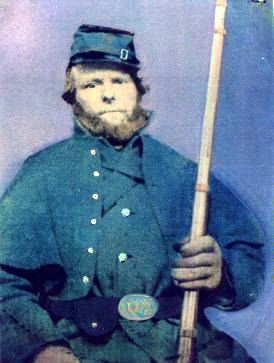
Both the State of Indiana and the Federal government issued soldiers in the 27th Indiana a variety of uniforms during their service from 1861-1864. Indiana outfitted the men for initial service and the Federal government provided the next two regimental-wide clothing issues. The Federal government also provided replacement clothing after taking responsibility for the volunteers. Below is a brief history of the uniforms worn by the 27th Indiana.
|
|
10 September 1861-March 1862. As a volunteer Infantry unit, the state government had the initial responsibility to equip the 27th Indiana in that first summer of 1861. The State of Indiana provided a 9-button short-coat. Most had cloth epaulets and lay-down collars but not all. Pants for enlisted men were light blue. The officers wore dark blue trousers with thin piping, believed to be light blue, down the outside seams. Hats were patterned on the 'McDowell' model 1858 Forage Cap, some trimmed with light blue piping. Oil-cloth Havlocks were also issued. Photographic evidence shows that some soldiers wore civilian slouch hats during this early period. Later photos show them as common, but the exception rather than the rule. The Forage Cap remained the standard headgear for the 27th Indiana enlisted soldiers throughout the war.
Issuing these uniforms was no small task for Governor Morton and the Hoosier state, as the initial call for volunteers filled or assembled an unequaled 55 regiments of Infantry and several batteries of artillery by October 1861 alone--more than any other state in the Union at the time. In addition to the difficulties in providing clothing and equipment to so many regiments, the 27th Indiana was even more difficult to clothe. When fully recruited, it became apparent that the regiment contained the tallest men in the Union Army. David Van Buskirk was nearly 7 feet tall and his Company F contained 35 men that were 6 feet or taller and over 60 men that were 5 feet 10 inches. The regimental history attests that each company had at least half their men of such height as well. This meant that the regiment was well over one inch taller on average than all the Union regiments during the Civil War. Quartermaster Crose now had to outfit his men in hard-to-find sizes and with shoes that averaged 3 to 4 sizes larger than the average regiment.
Needless to say, when the first uniforms arrived, they did not fit properly:
On September 10, our uniforms finally came. We had been anxious to have them and almost ran over each other to be served first. We thought them magnificent. All those who could possibly do so obtained furloughs home at once that their friends, particularly their sweethearts, might see them arrayed in their military clothes. But our anxiety to have a uniform and our over-estimate of their beauty in general, had led us astray. It did not take long to find out that those were a bad fraud, and in them we cut a figure on the verge of ridiculous. They consisted of a pea-jacket, cap and pants, all dark blue [the pants were light blue]. Imagine the appearance of a thousand men, mostly young, but quite a few ranging from twenty-five to thirty-five, clothed in little coats the length of an ordinary vest and wearing diminitive [sic] skull caps, barely large enough to perch on top of their heads. And remember, that the jacket, pants and caps are all not far from the same size and length, while the men differ greatly in these respects. This gives one a coat coming well down to the crotch, but at the same time gives him too much waist measure, almost enough to go around him twice. The coat of another comes but little below his arms and when he buttons it, it squeezes him until he is red in the face. The same is true of the pants. Misfits and disproportions hold high carnival, while the quality of the clothes was coarse and the workmanship extremely rough.
But those uniforms did gloriously at Camp Morton compared with the behavior afterwards, when we got our accoutrements. There was no strap or nib on the jacket anywhere to prevent the belt from slipping down, when weighed by the bayonet and cartridge box. And, slipping below the jacket, the belt rested its weight on the pants, which in turn sagged them down until a goodly portion of the nether garment appeared between pants and jacket. The neat and soldier-like (?) aspect of the regiment on battalion drill and review, as well as the personal comfort of those concerned, can be easily inferred.
Edmund R. Brown, Company C
Below is a sampling of soldier photos from different companies taken between September 1861 to March 1862.
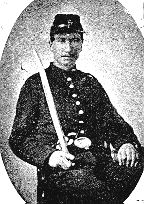 |
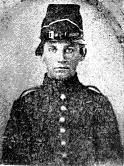
|
|
|
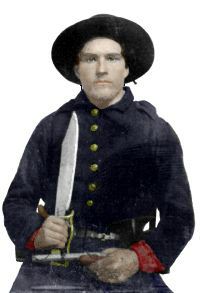 |
 |

|
|
|
|
|
|
March 1862-September 1862. The 27th Indiana's first uniform issue was enough to get the men through their first winter as soldiers of the United States in volunteer service. Sent to the Eastern Theater and brigaded with mostly Eastern soldiers, the 27th men soon took on the appearance of the soldiers from that region. In March 1862, the Federal government fitted the entire brigade with regulation enlisted frock coats. These had a stand-up collars, 9-button fronts, and cuffs and collars piped in light blue. The men wore a variety of vests with photos showing what appears to be blue, gray and even white--all according to the regulation of the day. Soldiers continued to wear the forage cap with some exceptions, like the civilian hat worn by John Smith above and Ed Hart below. The forage caps gradually were swapped the more familiar 'contract pattern' as the Federal supply system turned to numerous manufacturers for its needs. Photos seem to indicate the men wore no insignia on their caps during this period to include the Infantry bugle or company letters. Some men would continue to wear their frock coats well into 1863, at least for photos, as it was a smarter looking uniform. While it may have been smarter looking, it wasn't necessarily preferred for fighting:
On the morning of March 10, we had orders to move...The next day we marched up within about four miles of Winchester and encamped, in a grove east of the pike...When it was found that no enemy was to be encountered at Winchester the troops dispersed to different camping places...We established our camp at the railroad cut, in the northern limits of the city, and settled down to regular camp life again. Within a day or two we were furnished new, dress uniforms, including tight-bodied, long-tailed coats, with high stiff collars. This was much like a farmer putting on a fine beaver overcoat when spring work begins. The warm weather was at hand, and if the army ever hoped to do anything, it must be now. But we accepted the dress coat like little men. The presumption is that we did not see the glaring folly of the thing, at the time, any better than others. As a matter of fact, we wore those heavy coats through the entire summer, in all its heat and dust, on all our long marches; then, in the Fall, exchanged them for the light-weight, lose fitting blouses, which constituted the regulation coat for soldiers in the field, until the end of the war.
Edmund R. Brown, Company C
Below is a sample of some of the men in frock coats. Note the different colored vests.
 |
 |
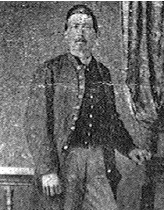 |

|
|
|
|
|
|
|
September 1862 - September 1864. The 27th Indiana suffered tremendous casualties between May 1862 and September 1862. Their frock coats, if not ripped and worn from hard campaigning, were torn by bullet holes and shrapnel. The regiment suffered over 500 killed, wounded or missing during this period! Although many of the wounded and nearly all of the missing would return to the regiment, the uniforms they wore at the end of September 1862 were simply worn out.
Our Quartermaster sergeant notes in his diary that the regiment was in the worst plight at this time for clothing and shoes of any in its history...Ours was but a fair sample of others. The Confederates were commonly a hard looking lot with respect to clothing, but we would have driven great bargains by even exchanges with them at this period. After a few days fresh supplies began to arrive and, though they came very slowly and in small quantities, we were eventually put in good condition again.
Edmund R. Brown, Company C
The government gave the regiment the 4-button sack coat to replace their tattered frock coats. The wounded returning to the regiment, as well as any new recruits, came fully equipped with the latest issue clothing. As stated above in the quote from Edmund Brown regarding frock coats, the sack coats were worn by the men from this date until the end of the war. The contract pattern forage cap remained the standard issue until the close of service as well.
Here is another example of a 27th Indiana soldier wearing the 4-button sack coat and contract pattern forage cap:

|
|
September 1863 - September 1864. Photos from the period show several non-standard variations of uniforms worn by the men of the 27th Indiana. These were all of private manufacture and were purchased by the men themselves. Although not fully known where they were manufactured, evidence suggests that many of these privately purchased uniforms could have been from New York City when the regiment garrisoned there for several weeks during the New York City draft riots. Or they could have been from individual tailors in Nashville or even from Indiana--either sent to the soldiers or obtained while they were on leave. Many photographs show New York City photographer's marks on the backs. Others show Nashville back marks, presumably taken during the winter of 1863-1864.
Here are some examples of 27th Indiana soldiers wearing non-standard uniform coats:
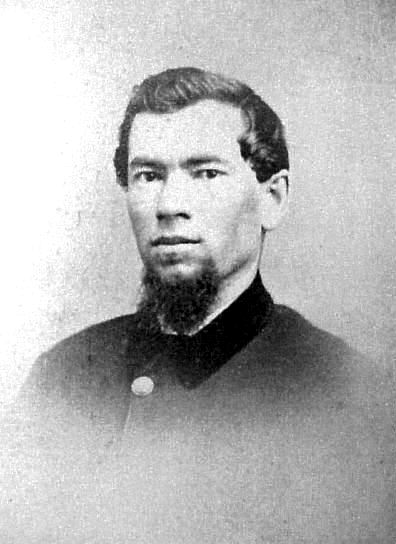 |
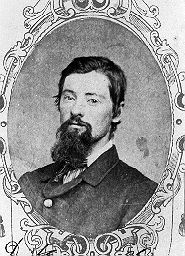 |
 |
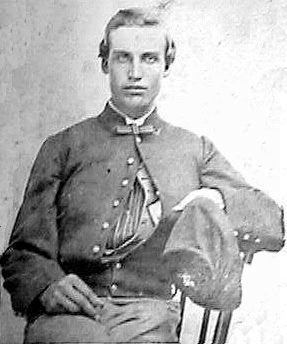 |
|
|
|
|
|
Wears a velvet-collared 4-button sack coat |
Wears a lapelled 4-button sack coat. Photo taken in fall of 1863 |
Wears very unusual 4-button frock coat |
Wears a 9-button short coat. Photo taken after April 1863. Note hat badge and numbers |
Price of Union Army Clothing-1864. Company E soldier James H. Dougherty's diary shows a list of clothing prices written on a couple of January 1864 pages. It is an important reference not only for the prices listed but also to show what was available to the men in the Winter of 1863-64 as they readied themselves for the Atlanta Campaign. Keep in mind that a private soldier's wage was $13.00 a month:
Sunday, January 31, 1864
The Price of Clothing
uniform Hat
$1.80
- foriage Cap
$ .65
(Forage Cap)
" Covers
$ .12
Ov Coats
$8.75
(Overcoats)
Mt pants
$4.15
(Mounted Pants)
Inft pants
$3.10
(Infantry Pants)
Blouses unlined
$2.65
" Lined
$3.25
Flanel Shirts
$1.57
(Flannel Shirts)
Stockings
$ .35
(Socks)
Shoes Soad
$2.20
(Stitched soul shoes)
" pegged
$1.68
(Pegged soul shoes)
Boots "
$3.25
ov Coats Mt
$10.50
(Mounted Overcoats)
Frock
$8.75
(Frock Coat)
W Blankets
$3.65
(Wool Blanket)
painted "
$1.70
(Oil cloth blanket)
Ruber "
$2.55
(Rubber blanket)
Poucheses
$2.10
(Poncho? Oil cloth Haversack?)
Ruber
$3.10
(Rubber Poncho? Rubber Haversack?)
Drawers
$ .89
(Cotton Underwear)
September 1861 - September 1864. All photographic evidence shows officers of the 27th Indiana wearing the regulation M1858 officer frock coat. No photographic variations have been found with the coats. Headgear was almost exclusively the officer kepi. A few photos of men wearing the Hardee-style hat appear with men in dress uniform. The officers wore a woolen red star XII/XX corps badge on the front of their kepi's, presumably to allow the embroidered Infantry insignia to be placed on the top.
|
|
Here are some more examples of 27th Indiana officers:
 |
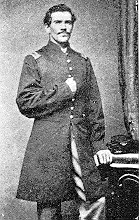
|
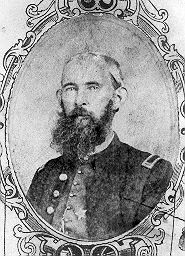
|
|
|
|
|
|
Wears the regulation field-grade double-breasted officer's frock coat. Photo taken in fall of 1863 |
Wears regulation frock coat. Photo taken in fall of 1862 or spring of 1863. |
Wears regulation frock coat with authorized gray vest. Photo taken in fall of 1863. Note metal corps badge on vest and watch chain. |
The 27th Indiana soldiers used a variety of weapons during the war, from converted flintlocks, imported rifles and modern domestic standard arms. The State of Indiana issued the first weapons and later, the Federal Government issued the regiment usable arms upon arrival to Washington, D.C and throughout its service.
August-September 1861. The State issued the 27th converted flintlocks for drill upon its arrival at Camp Morton in Indianapolis. Edmund Brown tells us, "the guns were old flintlocks, rudely changed to use caps, and it was questionable which which was there most dangerous end." These were likely US Model 1816 Flintlocks modified with new locks and percussion cones bored into the barrel. Thousands of these weapons were turned over to state militias in the 1850s in addition to Remington converted M1816s as well. Below is an example:
 | |||
|
| |||
|
Below right is Andrew Vansickle, Company G, armed with the M1816 Converted Flintlock. Photo was taken in September 1861. Note the interesting bird perched on the muzzle. | |||
|
The State also issued 74 of the M1853 Enfield Rifle, commonly known as the 2-banded Enfield and 22 'Long Range Rifles.' Just what the 'Long range Rifles' were is hard to determine although it is possible they may have been some kind of individually crafted 'American Rifle' or even 3-banded Enfields. Company B drew both of these types of rifles to fill their company but photos also show men in Companies A & K posing with them. This is possibly due to skirmishers having the short and long weapons but more likely the weapons were loaned out to peers for early photographs brandishing the menacing-looking sword bayonet. All of these weapons and their accoutrements were returned to the Indiana State Arsenal on 15 September 1861--the same day the regiment boarded the train that took them to the war in the East. Below is an example an Enfield short rifle, a picture of Conrad Eckert holding one with sword bayonet and a picture of John Bresnahan with just the Enfield bayonet.
 | ||||||
|
| ||||||
|
September 1861-June 1862. After arriving at Washington DC on the 17th of September, the 27th Indiana immediately received weapons and equipment from Federal arsenals. The regiment drew 'Belgium Rifles.' From the research available, these appear to have been the Belgian M1842 .69 Caliber Rifled Musket. Another possibility is the M1859 French Rifles (Liege variant), commonly called Belgian rifles. The Liege manufactured weapons had bores of .61 caliber. Federal Arms inspectors considered these weapons to be equal to the latest US manufactured rifles. The view of the soldiers was varied. Ulysses S. Grant, when speaking of the Belgian rifles before Vicksburg stated,
The small-arms of the enemy were far superior to the bulk of ours. Up to this time our troops at the West had been limited to the old United States flint-lock muskets changed into percussion, or the Belgian musket imported early in the war&emdash;almost as dangerous to the person firing it as to the one aimed at&emdash;and a few new and improved arms. These were of many different calibers, a fact that caused much trouble in distributing ammunition during an engagement. The enemy had generally new arms which had run the blockade and were of uniform caliber. After the surrender I authorized all colonels whose regiments were armed with inferior muskets, to place them in the stack of captured arms and replace them with the latter. A large number of arms turned in to the Ordnance Department as captured, were thus arms that had really been used by the Union army in the capture of Vicksburg.
Grant's Memoirs, Vol I, Chapter 29, p. 571
To the new soldiers of the 27th however, these weapons seemed a marked improvement over the converted flintlocks. Edmund Brown offers a description of the weapons when they were issued.
We called the guns we drew here 'Belgium Rifles.' They were evidently of some foreign manufacture. They were really young cannon, weighing fourteen pounds each. They had spikes at the breech projecting upward on the inside. These, fitting into the hollow end of the ball, wedged it into the rifles. This improved their shooting qualities, but made them unhandy to keep clean, as the ball could not be drawn. They were all deadly at the muzzle end, and some of them were next to deadly at both ends. Their kick was like the recoil of a cannon.
Edmund R. Brown, Company C
The 27th used its Belgian muskets in the battles of Newtown, Buckton and Winchester. Below are examples of both rifles:

|
|
|
 |
|
|
June-September 1862. After the Battle of Winchester, the 27th Indiana replaced its Belgian Rifles. This was partly due to new arms becoming available and partly due to the 27th having rifles that had incompatible ammunition with the rest of its brigade. Consequently, Federal authorities delivered six companies worth of 3-banded M1853 Enfield Rifled Muskets and four companies worth of what were likely 2-banded M1853 Enfield Rifles with sword bayonets. The Enfield muskets were well-liked and initially so were the short rifles. Gradually however the men came to regard the shorter weapons with disdain for both Infantry battle and drill due to their weight and size.
Our old Belgian Rifles were, as a general rule, accurate and wicked shooters, but they carried such large balls that it was necessary to provide ammunition especially for the 27th. This not only involved extra labor, but there was danger that we might run short at some critical time and not be able to borrow. Aside from this, the muskets we received were inferior to those we turned in. Four of the companies, the two center [C&H] and the two flanking companies [A&B], were supplied with 'Minnie' rifles. These were short, light guns, with swords about two feet long for bayonets. The other six companies received the English Enfields.
[I] was in one of the companies receiving the guns with the sword bayonets. We were greatly elated over them at first. They had been highly eulogized in the papers. A command armed with them seemed ready for very bloody work in the estimation of the average newspaper man, But experience proved that the short swords had no other higher use than to cut tent stakes and kindling wood. Besides, they were cumbersome and annoying to carry on the march. Without bayonets the guns were too light for effective shooting and too short for drilling. With the bayonets they were too unbalanced and unwieldly [sic] for either. Those receiving the Enfields, while a little chagrined at the start, soon discovered that they had by far the most desirable arms of the two. The Enfields possessed one other advantage over any other gun used in the Union side in the war. The troops were not slow to see it and avail themselves of its benefits. It was that the rebels were largely armed with them and in any battle it was easy to get another gun if yours was lost or disabled. Then they were also light, well proportioned and shot to kill.
Edmund R. Brown, Company C
The 27th used the M1853 Enfield in the battles of Cedar Mountain and Antietam, where it did such destructive killing in Miller's Cornfield. Below is an example of the 3-Banded Enfield Rifled Musket:

|
|
|
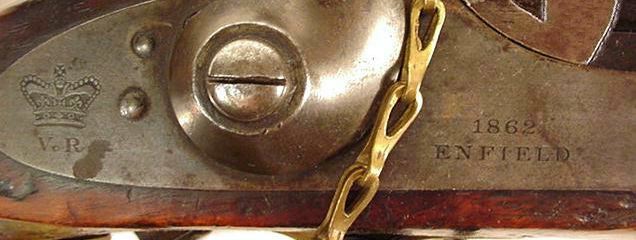 |
|
|
September 1862-September 1864. After the Battle of Antietam, the 27th traded in their weapons for the last time. While the soldiers generally admired the sturdy M1861 Springfields, they regretted losing the accuracy of the English Enfields. The regiment licked its wounds and replaced tattered uniforms, equipment and rifles while encamped at Maryland Heights.
The Twenty seventh again exchanged arms while in this camp. All the companies received the same kind, namely, Springfield rifles. These were the first and only guns we ever had of American make. We carried them, many of us the identical ones received here, to the end of our service. They had the merit of being light, shapely and well balanced for handling; a good gun--for a time of peace. Uniformly hard, close shooters, they were not.
Edmund R. Brown, Company C
The Hoosiers fought with the M1861 Springfield Rifled Muskets at the battles of Chancellorsville, Gettysburg, Resaca, New hope Church, Kolb's Farm, Peach Tree Creek and Atlanta. An example is below:
 | ||
|
| ||

| ||
|
| ||
|
September 1861-September 1864. The officers of the 27th Indiana carried standard regulation weapons and equipment. All of the field grade officers, as well as the adjutant, received Colt .36 Caliber M1851 Navy Revolvers and regulation M1850 Field and Staff Swords. The line officers carried the same but with M1850 Foot Swords. This initial equipment had a profound impact on both the new officers and men.
To say that such a person, when turned loose in a camp of soldiers, armed with a commission, a cheap, new uniform, glittering shoulder straps, sword and sash, with a navy revolver tugging at his belt, cuts a broad swath, is putting it mildly. He not only has a seven-foot cut, with a self-binder and bundle-carrying attachment, but is also a stacker and thrasher as well. There is no room for anybody else in the field.
Edmund R. Brown, Company C
The 27th in time grew to love its officers and were wholly devoted to them. Although they would make no visible significant change in clothing and weaponry, their inner change would endear them to a generation of Hoosiers. The later officers acquired different revolvers, likely due to the availability of arms where they found themselves commissioned. It is a known fact that Remington M1858 Revolvers were used by the officers and one suspects M1860 Colts as well. Below are examples of the arms with which the 27th's officers led them into battle:
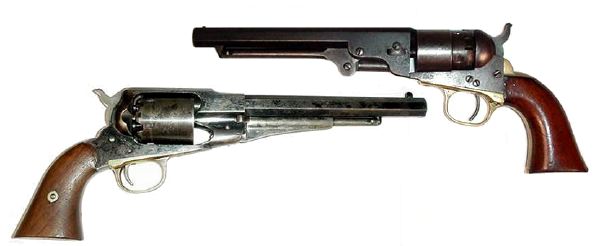 | ||||||
|
Left - The M1858 Remington New Army Revolver in .44 caliber. Right - The M1851 Colt Navy Revolver in .36 Caliber | ||||||
 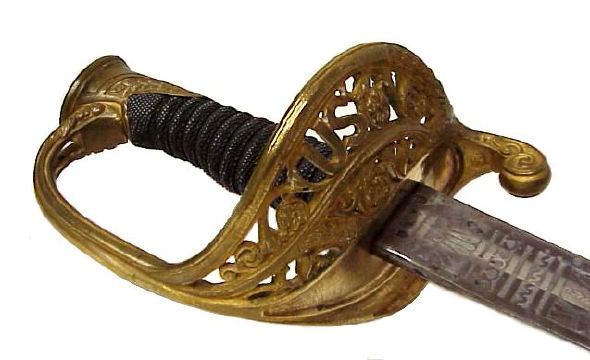
|
For comments or suggestions, please contact Steve Russell